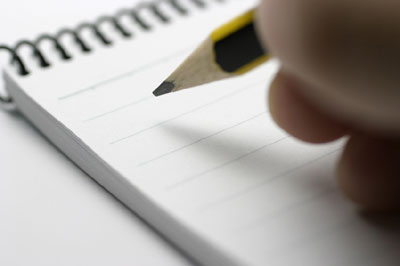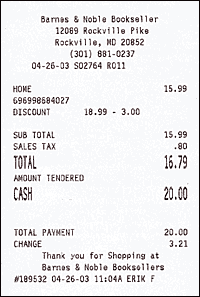You come home one evening and you find your front door is open. At first, you’re in shock and denial. Maybe the Super needed to fix a leak. Then you enter slowly, looking around. Your large, flat panel TV is gone, and so is your MacBook Pro. The sinking feeling punches you in the gut. You’ve been robbed and suddenly you feel very vulnerable. This happens every day of the week.
This is the reason that you need renter’s insurance, which is generally available for under $240 per year in NYC. That’s about $20 per month! How can you afford NOT to have it? When you rent an apartment in NY, make sure that getting renter’s insurance is near the top of your to-do list. Doing an apartment search in NYC doesn’t mean that you should neglect the realities of living in a big city.
But having insurance isn’t enough to maximize your return if you ever need to file a claim. The following 4 tips will insure that you get everything you’re entitled to from the insurance company.
Tip #1 – Have Enough Personal Belonging Coverage
- Image may be NSFW.
Clik here to view.
Don’t sell yourself short if you need more personal belongings coverage. Think of all your computers, laptops, TVs, expensive electronics, jewelry, camera and music equipment, artwork and collectibles. How much are they all worth? That amount — plus a little extra just in case — is the amount of personal belonging coverage you should have.
Clik here to view.

Having a list of your valuables is essential.
Tip #2 – Make a Most-Valuable-Item List Right Now
Think of all the gadgets, trinkets and collectibles you own and start typing up your “most-valuable-items” list on a word document. Next to each item that you write down, list the amount you paid for the item.
If it’s an electronic device of any sort, write down the serial number (usually found either in the instruction manual or in small print next to a barcode or “SN” label on the device). Your best bet is to also take a photo of the object and a photo of the serial code or bar code. This will help prove that you owned the item.
When it’s completed, attach the document to an email and send it to yourself. Label the email something inconspicuous, like “Christmas 2009.” Store the email in a new email folder for safekeeping. Print out a copy for your “important papers” file, and if you have a trusted relative or significant other, email them a copy as well.
This list will help you in two ways:
1) In case your things are damaged or stolen, you’ll be able to refer to the list to see which of your valuables are still there and which are not.
2) You’ll need to refer to the list if you file your insurance claim after a loss – it shows what might need to be replaced/repaired. The serial numbers are also valuable when filing a claim, as they let the insurance company know that you did actually buy the product and you aren’t just making an early Christmas wish-list.
Tip #3 – Gather “Proof” of Purchase – Photos, Receipts and Instruction Manuals
Clik here to view.

Even cheap items should be on your list if they are irreplaceable to you.
If you file a claim after an incident, you will be asked by the insurance representative to list the items that you “claimed” to be stolen. Then comes the kicker – you will be asked to provide “proof” that you owned the items. Proof? The items were stolen, how could I prove I had them in the first place?
- Keep your receipts from now on; they show identifiable serial numbers, proof of purchase and the item’s original value.
- Instruction manuals, as I learned, also act as proof of purchase, as they contain identifiable serial numbers for each of your items. Keep these in a shoebox or filing cabinet — yes, you’ll be like one of those super-organized people mentioned earlier, but it’s for good reason.
- Finally, take digital photos of all of your pricey items, from electronics to furniture, and email them to yourself. If you just save the photos on your computer and that gets stolen, you’re out of luck. If you’re less tech-savvy, physical photos stored in a drawer will work fine as well.
Tip #4 – Caught Unprepared? Other Ways to Find Proof of Purchase
I know. I used to toss many of my receipts too, before I learned. But lacking proof that you owned an item will make an insurance company hesitant to dole out a big claims check.
In case you’ve already been burglarized or are otherwise unprepared, here are some last-minute places to find proof of purchase:
Clik here to view.
Even if you only have a studio apartment, you should save electronics manuals. They can be used as proof of purchase, particularly if you wrote the serial number in the manual.
1) Check your email — An online shopper can use “confirmation” emails as proof.
2) Look at your PayPal history — Each transaction will show purchase information.
3) Dig through drawers for old instruction manuals and product warranties.
4) Find photographs with the missing items shown — a picture with you sitting on a couch that was stolen helps your case for a claim as well.
5) When you moved into your apartment rental in NY,
Think of any piece of evidence to support your claim that you owned that stolen item. The more evidence, the stronger your case and the more likely you are to receive a claims check for the amount you need to replace your items.
Dealing with home or renters’ insurance seems like a lot of hassle, but it’s worth every penny when the unexpected happens. Whether you use a full fee real estate broker or find New York no fee apartment rentals, you’ll leave your apartment happier every day knowing that you’re covered in case of a theft.
I’m glad the insurance company makes it this hard to claim a loss. If it were easy to do, there would be a lot more insurance-claim fraud — and that would cause insurance premiums to be much higher for the rest of us.
Related Posts:
This post originated from http://www.Rent-Direct.com/blog Apartment Burglarized? 4 Renter’s Insurance Tips You Must Know This is the blog for Rent-Direct.com and RDNY.com - New York's largest and most trusted No Fee apartment rental service. RDNY.com
